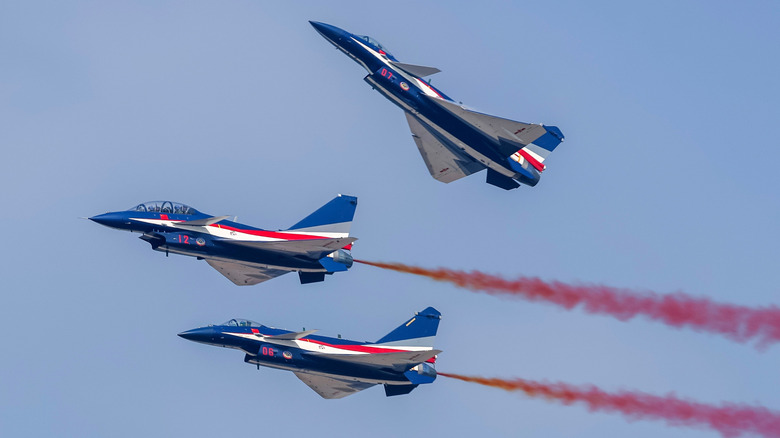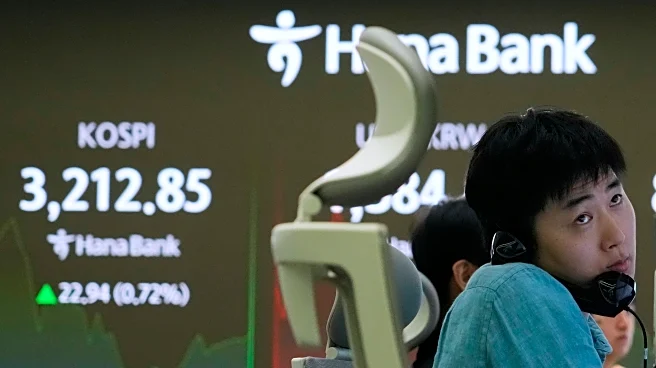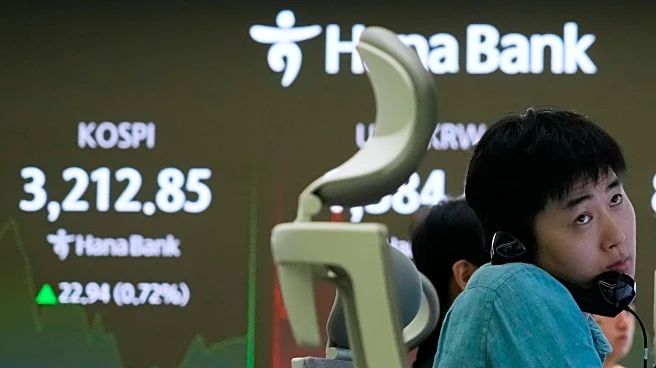
Let's be clear, the United States still has a bigger fighter jet fleet than China. It's not a small lead either. Global defense review site GlobalFirepower.com's numbers for 2025 show that the U.S. fields a whopping 1,790 fighter and interceptor aircraft, while China comes in second with 1,212. If you zoom out to all military aircraft, America's dominance is even more staggering. A FlightGlobal report from this year (via Bloomberg) noted that Washington has 13,043 total aircraft in its fleet, while China only
has 3,309. That means that Washington commands a larger air force than China, Russia, India, South Korea, and Japan put together.
But numbers alone obviously don't paint the full picture. A significant chunk of America's airpower is made up of decades-old planes that are well past their prime. Meanwhile, the People's Liberation Army Air Force (PLAAF) is now the biggest in the entire Indo-Pacific region and the third-largest worldwide with more than 3,150 crewed planes.
Of China's total aircraft, around 1,300 are modern fourth-generation fighters. The Pentagon's 2024 China report (according to Air & Space Forces Magazine) confirms that nearly all of China's fighters are expected to be fourth-gen or better within a few years. This whole effort is driven by President Xi Jinping's ambitious goal to achieve full military modernization by 2027. So while the U.S. is undoubtedly on top in terms of the strength and size of its air force, China is trying to shorten the gap.
Read more: 10 Largest Air Forces In The World, Ranked By Military Aircraft Numbers
How China Is Attempting To Close The Gap

But even as modernization is focused on upgrading the entire fleet to at least fourth-generation across the board, the crown jewel of China's fleet is currently the J-20 "Mighty Dragon." This is the country's fifth-generation answer to America's own modern F-22 and F-35 stealth fighters. According to a Center for Strategic and International Studies analysis, Beijing is now cranking out over 100 J-20s every year. The J-20 is constantly improving, too. The Pentagon notes that China is working on upgrades to give it supercruise capabilities with new engines, thrust-vectoring nozzles, and the ability to carry more missiles internally. They're also developing a strategic stealth bomber, the H-20.
Not everything is perfect, however. Some observers who have seen the J-20 up close commented on its "shoddy workmanship," which could hurt its stealth profile, according to The National Security Journal. Still, if the threat of Chinese fighters isn't enough, the country's unmanned systems are also seeing rapid progress. These are quickly becoming comparable to U.S. drones, especially with recent additions like the Jiu Tian "High Sky" SS-UAV drone mothership.
As for actual warfare, Beijing has reportedly gotten much better at it. A 2016 RAND report also found that PLAAF pilots struggled to adapt to changing battle situations and were scared to take risks for fear of making mistakes, as they lacked the autonomy of their Western counterparts. However, Mike Dahm from the Mitchell Institute for Aerospace Studies told Bloomberg in 2025 that "the US military has excelled at linking different ground, space, and airborne systems together in an effective kill chain," and he now believes that China may be capable of the same.
Want the latest in tech and auto trends? Subscribe to our free newsletter for the latest headlines, expert guides, and how-to tips, one email at a time.
Read the original article on SlashGear.














